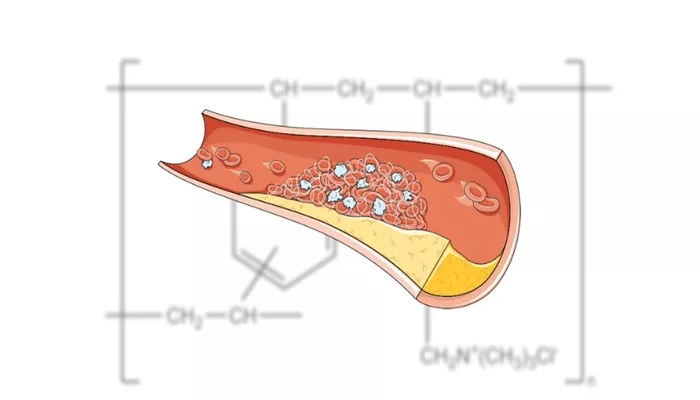Hyperlipidemia, characterized by elevated levels of lipids in the blood, is a significant risk factor for cardiovascular diseases.
The management of hyperlipidemia often involves the use of antihyperlipidemic drugs, which aim to lower cholesterol and triglyceride levels. While these medications are effective in reducing cardiovascular risk, they can also have various side effects. One concerning side effect is the prolongation of bleeding time, which can lead to increased bleeding risks in patients. This article discusses the antihyperlipidemic drugs associated with prolonged bleeding time, their mechanisms of action, and the implications for patient management.
What Is Antihyperlipidemic Drugs?
Antihyperlipidemic drugs can be categorized into several classes based on their mechanisms of action:
Statins: These are the most commonly prescribed antihyperlipidemics.
They work by inhibiting HMG-CoA reductase, an enzyme involved in cholesterol synthesis in the liver. Statins effectively lower low-density lipoprotein (LDL) cholesterol and have additional benefits such as improving endothelial function and reducing inflammation.
Fibrates: Primarily used to lower triglycerides, fibrates activate peroxisome proliferator-activated receptors (PPARs), which enhance fatty acid oxidation and decrease triglyceride levels.
Niacin: Also known as vitamin B3, niacin reduces LDL cholesterol and triglycerides while increasing high-density lipoprotein (HDL) cholesterol. Its mechanism involves inhibiting hepatic secretion of VLDL and enhancing lipoprotein lipase activity.
see also: When Is The Best Time to Exercise for High Cholesterol
Bile Acid Sequestrants: These drugs bind bile acids in the intestine, preventing their reabsorption and promoting cholesterol conversion to bile acids.
PCSK9 Inhibitors: These monoclonal antibodies target proprotein convertase subtilisin/kexin type 9 (PCSK9), leading to increased LDL receptor availability and decreased LDL levels.
While these medications are effective, they can lead to side effects that clinicians must monitor closely.
Antihyperlipidemic Drugs That Prolong Bleeding Time
Several antihyperlipidemic drugs have been associated with an increased risk of bleeding due to their effects on platelet function or coagulation pathways. The following classes of drugs are particularly noteworthy:
1. Niacin
Niacin has been linked to prolonged bleeding times. It can cause flushing and other side effects due to its vasodilatory effects, but it also influences platelet aggregation. Niacin may inhibit platelet function by affecting prostaglandin metabolism, leading to an increased risk of bleeding events, especially when combined with other anticoagulant or antiplatelet therapies.
2. Fibrates
Fibrates, such as fenofibrate and gemfibrozil, can also prolong bleeding time. They may interact with anticoagulant medications like warfarin, increasing the risk of excessive bleeding. The mechanism behind this interaction is not fully understood but is believed to involve alterations in liver metabolism and changes in lipid profiles that affect coagulation factors.
3. Omega-3 Fatty Acids
Prescription omega-3 fatty acids (e.g., ethyl eicosapentaenoic acid) are used primarily for lowering triglycerides. These agents can affect platelet aggregation and may prolong bleeding time. The antithrombotic effects of omega-3 fatty acids have been documented, suggesting a potential increase in bleeding risk when used alongside other anticoagulants.
4. Statins
While statins are not primarily known for prolonging bleeding time, there is some evidence suggesting that they may have a mild effect on coagulation parameters. Statins can influence endothelial function and have anti-inflammatory properties that might indirectly affect hemostasis. However, the clinical significance of this effect is still under investigation.
Clinical Implications
The potential for prolonged bleeding time with certain antihyperlipidemic drugs necessitates careful patient management:
Patient History: Clinicians should obtain a thorough medication history from patients prescribed antihyperlipidemics, particularly those with a history of bleeding disorders or those taking anticoagulants or antiplatelet agents.
Monitoring: Regular monitoring of coagulation parameters may be warranted for patients on niacin or fibrates, especially if they are also receiving anticoagulant therapy.
Patient Education: Patients should be educated about the signs of excessive bleeding (e.g., unusual bruising, prolonged bleeding from cuts) and advised to report any such occurrences promptly.
Drug Interactions: Awareness of potential drug interactions is crucial. For example, combining fibrates with warfarin requires careful dose adjustments and monitoring due to the increased risk of bleeding.
Conclusion
Antihyperlipidemic drugs play a vital role in managing hyperlipidemia and reducing cardiovascular risk. However, certain medications within this class can prolong bleeding time, posing additional risks for patients. Niacin,fibrates, omega-3 fatty acids, and potentially statins should be prescribed with caution in patients at risk for bleeding complications.
Ongoing monitoring and patient education are essential components of care to mitigate these risks while effectively managing lipid levels.
In summary, understanding the side effects associated with antihyperlipidemic medications allows healthcare providers to make informed decisions regarding patient safety and treatment efficacy.
Related topics:


